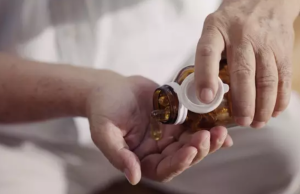
Dish cloths have many uses – they clean countertops, wash dishes, and absorb liquids fast after a spill. Some sad souls even use them to wipe the floor when nobody is looking!
Studies have shown that kitchen sinks are one of the dirtiest areas in the home and sometimes contain more E.coli than your toilet!
Considering dishcloths practically live in or near the sink, it is safe to say they can easily become a breeding ground for harmful bacteria.
Which leads us to an important question – how often should you replace your dish cloths?
In this article, we will explore how often you should be replacing your dish cloths to ensure a clean and safe kitchen environment.
The Lifespan of a Dish Cloth
The lifespan of a dish cloth depends on various factors, including how often it’s used, how well it’s cared for, and the material it’s made of. Here are some general guidelines for when to consider replacing your dish cloths:
Frequency of Use: The more often you use a dish cloth, the shorter its lifespan will be. If you use it multiple times a day, it’s likely to wear out faster.
Material: Dish cloths come in various materials, such as cotton, microfiber, and bamboo. Cotton dish cloths tend to wear out faster than microfiber or bamboo cloths, so you might need to replace them more frequently.
Maintenance: Proper maintenance can extend the life of a dish cloth. Regularly washing and disinfecting it can help prevent bacterial growth and odors. If you neglect maintenance, you’ll need to replace the cloth sooner.
Signs It’s Time to Replace Your Dish Cloth

Even though there is no one-size-fits-all answer to how often you should replace your dish cloths, there are clear signs that indicate it’s time for a replacement:
Foul Odor: If your dish cloth emits a persistent, unpleasant odor even after washing, it’s a sign that bacteria have taken hold, and it’s time to replace it.
Stains and Discoloration: Stubborn stains and discoloration that don’t come out even after washing can make your dish cloth less effective and less hygienic.
Torn or Worn-out Fabric: Over time, the fabric of a dish cloth can become thin and start to tear. When you notice significant wear and tear, it’s time to invest in a new one.
Reduced Absorbency: If your dish cloth is no longer absorbing moisture as effectively as it used to, it’s time for a replacement. An inefficient cloth can leave surfaces wet, increasing the risk of bacterial growth.
Persistent Bacterial Growth: If you’ve tried disinfecting your dish cloth, but it still harbors bacteria and germs, it’s a sign that the cloth has reached the end of its useful life.
How to Extend the Lifespan of Your Dish Cloths
While you can’t make dish cloths last forever, you can extend their lifespan by following these tips:
Regular Washing: After each use, rinse your dish cloth thoroughly and wring it out. Wash it in hot water with detergent at least once a day.
Disinfection: Periodically, disinfect your dish cloth by soaking it in a mixture of water and bleach or vinegar for about 15-20 minutes.
Use Multiple Cloths: Rotate between several dish cloths to reduce the frequency of use for each one. This gives them time to dry thoroughly between uses.
Choose Quality Materials: Invest in high-quality dish cloths made from durable materials. While they may be more expensive upfront, they will last longer and provide better value over time.
Conclusion
Dish cloths are essential tools in the kitchen, but they don’t last forever. Regular maintenance and vigilance can help extend their lifespan, but eventually, they will need to be replaced. Keep an eye out for signs of wear, bacterial growth, and reduced effectiveness, and replace your dish cloths accordingly to ensure a clean and hygienic kitchen environment. By doing so, you’ll be taking a simple yet effective step towards a healthier and safer home.




















